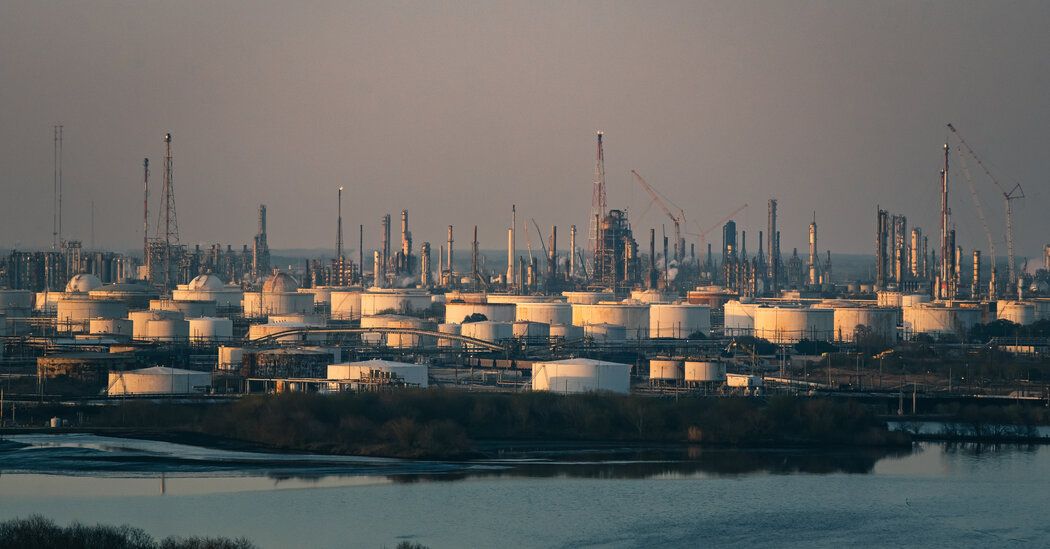Exxon Reports Leaner Earnings in Second Quarter
The Numbers
Exxon’s revenue declined in the latest quarter, to $82.9 billion from $115.7 billion a year earlier. The company reported earnings per share of $1.94, compared with $4.21 in the second quarter last year.
Exxon’s reduced profit is relative to the unusual level achieved in a roiled energy market a year ago. It is higher than the second-quarter profit of $4.7 billion in 2021.
Other energy companies have also reported declining income. Chevron, the second-largest American oil company, said on Sunday that its second-quarter income was $6 billion, down from $6.6 billion in the first quarter and nearly a 50 percent decline from a $11.6 billion profit in the second quarter of last year.
Shell, the largest European energy company, on Thursday announced a second-quarter profit of $5.07 billion, down 56 percent from last year.
Why It Matters: A reflection of lower oil prices.
Exxon’s reduced profit is a sign that the global energy market has stabilized since it was upended by Russia’s invasion of Ukraine in February 2022.
It is also an indicator of cooling U.S. inflation, as smaller profits reflect easing oil prices. Those easing prices are reflected in the inflation data, too. The overall Consumer Price Index, which includes food and energy costs, climbed 3 percent in the year through June, but a measure that strips out food and energy rose more, by nearly 5 percent.
Corporate profits have been cited as a contributor to rapid inflation since the start of the Covid-19 pandemic, and oil companies have been accused of unnecessarily raising their prices without ramping up production, harming consumers. Darren Woods, the Exxon chief executive, responded before a House committee that “no single company,” but rather the market, established prices based on supply and demand.
Background: The Ukraine invasion upended the energy market.
The American benchmark, West Texas Intermediate crude oil, soared to more than $120 per barrel in June 2022 and stayed above $90 through that summer. Inflation reached a 40-year high, as consumer prices rose 9.1 percent in June 2022 from a year earlier.
A proximate cause of the oil-price increase was Russia’s invasion of Ukraine, which constrained oil supply from a country that was the world’s biggest exporter of oil. In response, the United States banned Russian oil imports, a move that helped push world energy costs up.
Prices fell below $80 per barrel late last year as investors expected a recession and Chinese demand for oil fell, with the market reacting to fears of more Covid-19 lockdowns in the country. Other developments, like the Biden administration’s release of oil from the Strategic Petroleum Reserve and increased oil production in the Permian Basin of Texas and New Mexico, have also helped ease prices.
After Saudi Arabia said it would extend a production cut of one million barrels per day through August — and Russia announced a cut of 500,000 barrels a day starting in August — oil prices reached their highest level in more than three months.
Still, at about $80 per barrel now, oil prices are lower than they were at the start of the war.
Source: The New York Times


